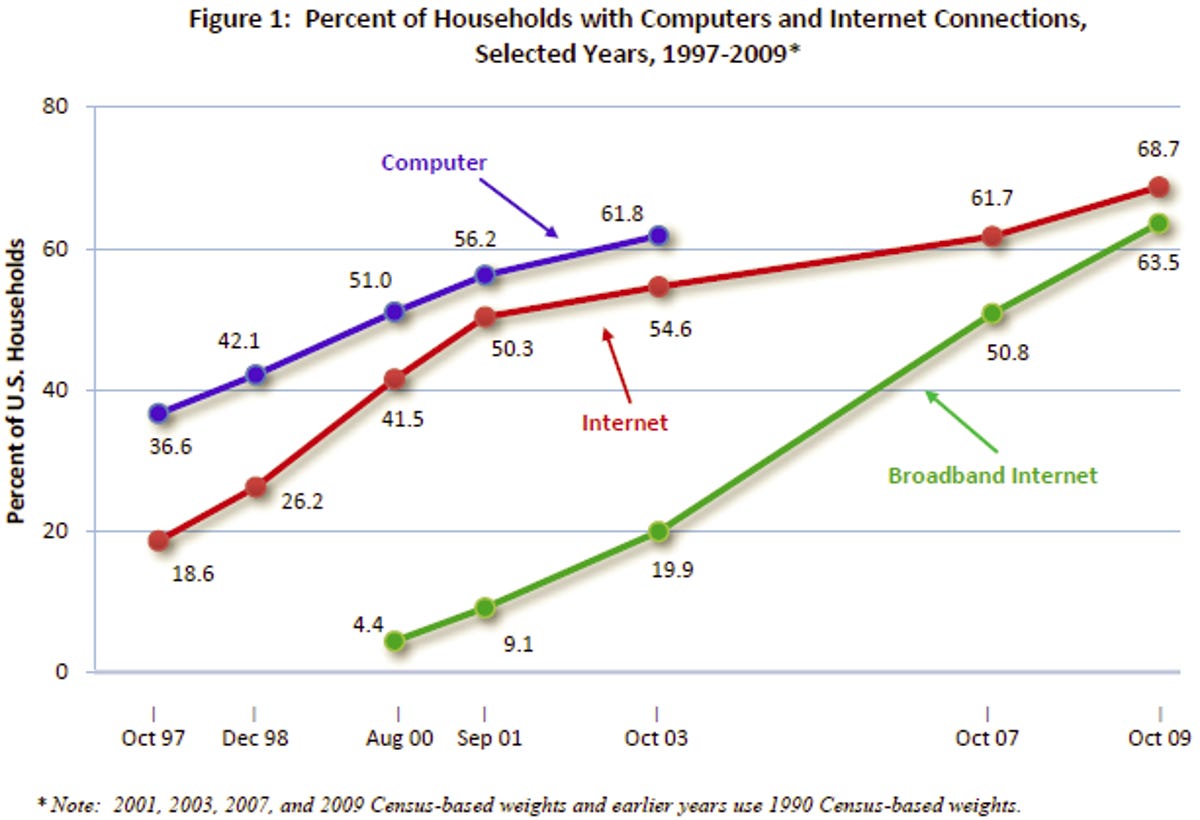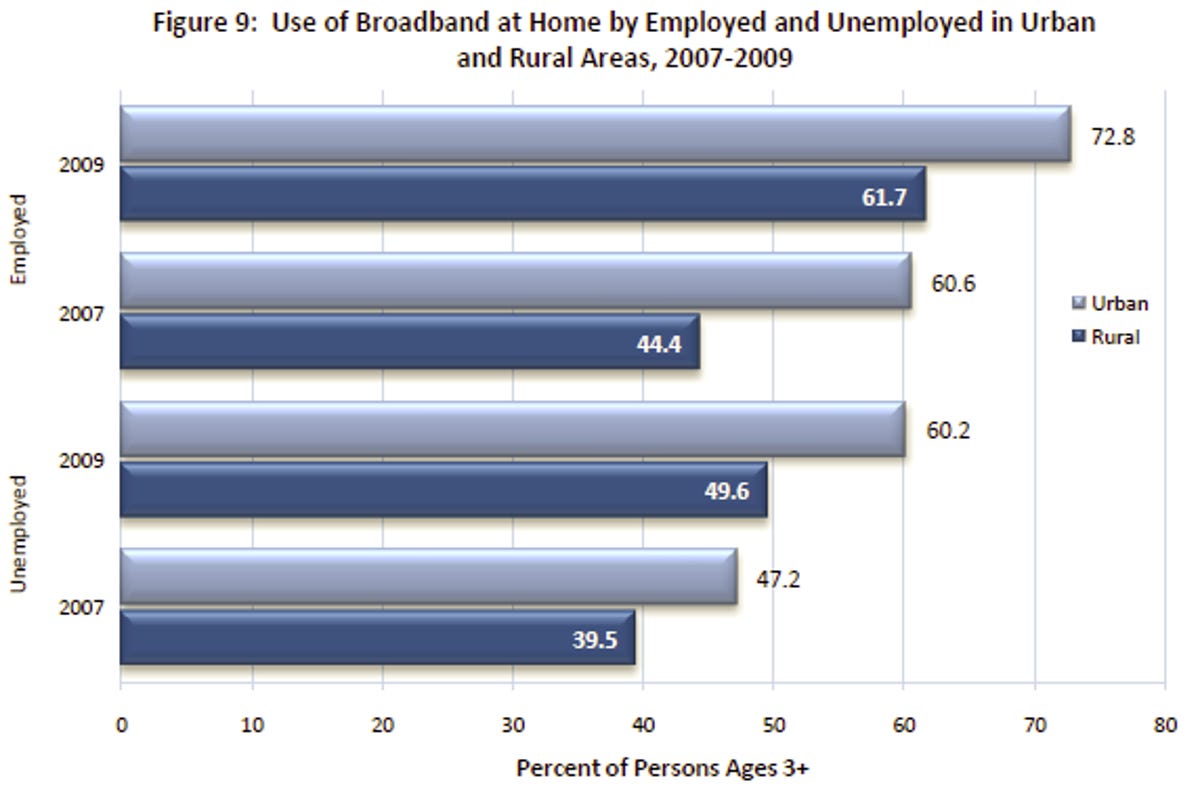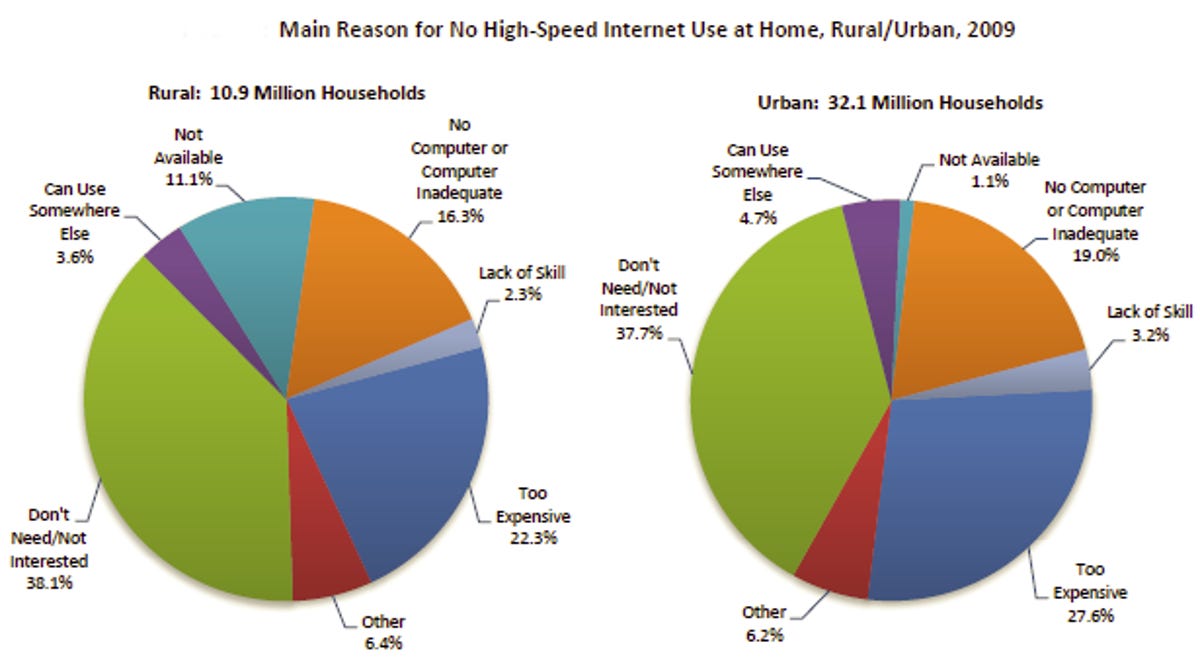Many of us take broadband Internet access for granted. But a new government survey paints a different picture of the nation.
In a survey of more than 100,000 people in more than 50,000 households across the U.S., 40 percent reported no broadband or high-speed access to the Internet, while 30 percent said they have no Internet access at all.
Sponsored by the National Telecommunications and Information Administration (NTIA) and conducted by the Census Bureau, the survey found that most of those interviewed said they either don’t need broadband or find it too expensive. Some said they have no computer, but many of those in rural areas reported that broadband is simply not available.

NTIA
Released Tuesday, the survey report “Digital Nation: 21st Century America’s Progress Toward Universal Broadband Internet Access” (PDF), also revealed that disparities in Internet and broadband access vary by age, income, education, and race.
People with higher rates of broadband access tend to be younger, white or Asian, highly-educated, married, and with higher incomes, while those with no broadband are often seniors or minorities, less educated, and living in non-family households with lower incomes or unemployed.


NTIA
Substantial differences also exist between urban and rural areas. For example, black and Hispanic individuals in urban locations have access to greater bandwidth than those in rural spots, the report notes. The gap between broadband access in rural and urban areas has lessened over the past few years, but still remains wide.


NTIA
The report was compiled from data collected in October of last year through a special Internet Use Supplement, part of the Census Bureau’s Current Population Survey. This marked the eighth Internet survey sponsored by the NTIA since the early 1990s. Information was collected from about 54,000 households and 129,000 citizens.
The NTIA said the U.S. Department of Commerce will offer a more detailed analysis of U.S. Internet access later this year as more data becomes available.
The Obama administration has been pushing universal broadband for all U.S. citizens as part of its national agenda. The FCC is due to submit a National Broadband Plan to Congress in March, unless another delay pushes that deadline back even further. But the road to national broadband faces several bumps, not the least of which is how to pay for it.



